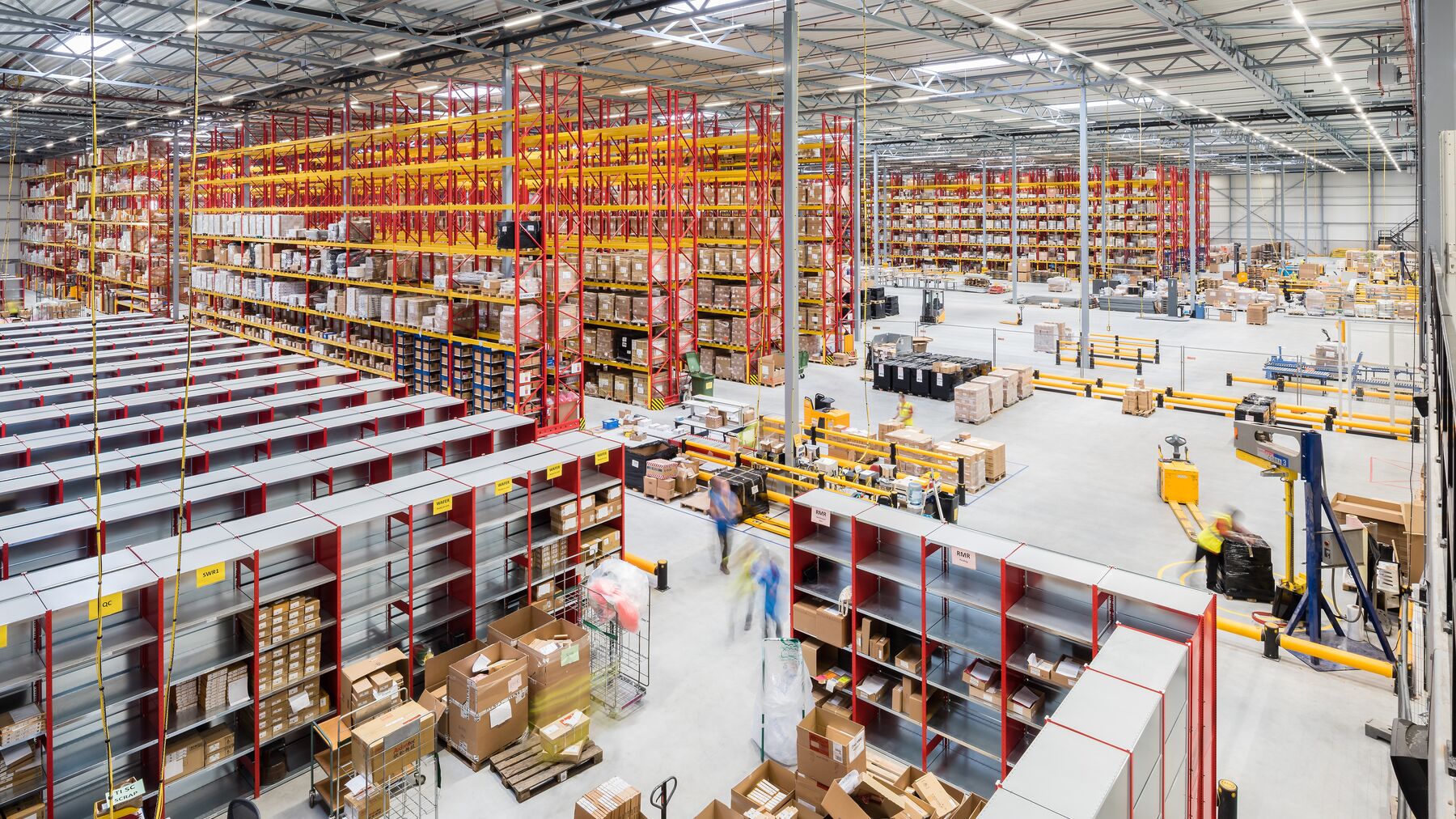The increasing complexity of modern supply chains has led companies to seek more sophisticated solutions for strategic and operational decision-making. Hybrid models, which integrate simulation techniques with advanced analytical methods, are emerging as an innovative response to the challenges faced by supply chain professionals in the digital age.
The convergence of big data, enhanced computational capabilities, and more efficient algorithms has opened new possibilities for developing modeling tools that leverage the best of both worlds: the mathematical precision of analytical models and the representational flexibility of simulation. This evolution addresses the need for systems capable of handling both the structural complexity and inherent variability of contemporary logistics operations.
What Are Hybrid Models in Supply Chain?
Hybrid supply chain models represent an advanced methodology that systematically combines discrete event simulation techniques with mathematical optimization models and predictive analytics. This integration enables the resolution of complex supply chain problems that require both uncertainty management and the optimization of limited resources.
A typical hybrid model incorporates deterministic components to optimize strategic decisions, while using stochastic simulation to evaluate system behavior under varying scenarios. This methodological duality allows planners to obtain robust solutions that consider both optimization goals and operational risk factors.
The distinguishing feature of these models lies in their ability to switch between different modeling paradigms according to the specific needs of the problem. For example, they may use linear programming to determine optimal production capacities, while employing Monte Carlo simulation to assess the impact of disruptions in the distribution network.
These systems integrate multiple real-time data sources, including transactional data from ERP systems, operational data from IoT sensors, and external variables such as weather conditions or market fluctuations. This connectivity allows for continuous model parameter updates and adaptive recommendations.
Why Combine Simulation and Analytical Models?
The evolution toward hybrid models addresses the inherent limitations of purely analytical or purely simulation-based approaches. This synergistic combination overcomes the individual weaknesses of each methodology while enhancing their respective strengths.
Traditional analytical models, though capable of producing mathematically verifiable optimal solutions, often require simplifications that may not accurately reflect real operational complexity. On the other hand, simulation models offer detailed representations of system behavior but may lack explicit optimization mechanisms and require extensive analysis to identify optimal configurations.
The integration creates more robust decision support systems capable of managing both resource optimization and operational risk quantification. This duality is especially valuable in environments where strategic decisions must be considered alongside tactical and operational variability.
Deterministic vs. Stochastic Approaches
Deterministic approaches are characterized by using fixed values for all model parameters, assuming full certainty about future conditions. These methods provide precise and reproducible solutions, ideal for strategic planning problems where optimal configurations are sought under known or highly confident conditions.
In contrast, stochastic approaches explicitly incorporate uncertainty through probability distributions for key parameters. This allows modeling of inherent variability in demand, processing times, resource availability, and other critical factors affecting supply chain performance.
The fundamental difference lies in how each approach handles uncertainty: while deterministic models seek the optimal solution for a specific scenario, stochastic models aim for robust solutions that maintain strong performance across multiple possible scenarios.
Hybrid models leverage this complementarity by using deterministic optimization to establish the basic decision structure and stochastic simulation to assess robustness and identify potential vulnerabilities under various operational conditions.
Strengths and Limitations of Each Method
Analytical models excel in their ability to guarantee mathematical optimality within defined constraints, providing computationally efficient solutions that can scale to large problems. Their deterministic nature facilitates result interpretation and trade-off analysis between conflicting objectives.
However, these advantages come with significant limitations, including the need to simplify complex real-world representations, difficulty in incorporating nonlinear behaviors, and a tendency to underestimate risks associated with operational variability.
Simulation models stand out for their ability to faithfully represent complex systems with multiple interactions, incorporate realistic statistical distributions, and evaluate emergent system behaviors. They can model detailed temporal dynamics and feedback effects that are difficult to capture analytically.
Simulation’s limitations include the lack of explicit optimization mechanisms, the need for extensive exploration of the solution space to identify superior configurations, and significant computational requirements to obtain statistically reliable estimates.
Architecture of a Hybrid Model Applied to Logistics
The architecture of a hybrid model for logistics applications requires a modular structure that enables seamless integration between analytical and simulation components while maintaining the flexibility needed to adapt to different operational contexts and decision-making requirements.
A typical architectural design includes distinct layers for data management, analytical processing, simulation, optimization, and results presentation. This separation facilitates maintenance, scalability, and reuse of components across different applications.
The data layer centralizes information management from multiple sources, implementing validation, cleaning, and transformation mechanisms to ensure the quality and consistency required by downstream models. This layer also handles historical storage and synchronization with operational systems.
Integration Between Discrete Event Simulation and Optimization Models
Effective integration between discrete event simulation and optimization models requires sophisticated mechanisms for information exchange and temporal coordination between the two paradigms. This integration can be implemented through various architectural patterns, each with specific advantages depending on the application context.
The most common pattern uses optimization to generate initial policies or configurations that are then evaluated and refined through simulation. This approach leverages the computational efficiency of optimization to explore the solution space while using simulation to validate performance under realistic conditions.
A more advanced variant embeds optimization within the simulation loop, where specific decisions are dynamically optimized based on the current state of the simulated system. This approach is particularly valuable for problems requiring continuous adaptation to changing conditions.
Temporal coordination between components requires synchronization mechanisms to ensure consistency between the different time horizons handled by optimization (typically strategic or tactical) and simulation (usually operational). This includes protocols for parameter updates, system state transfer, and result aggregation.
Connectivity with Real Data (ERP, MES, IoT Sensors)
Connectivity with real operational systems is a critical aspect that differentiates academic hybrid models from practical industrial implementations. This connectivity must handle the heterogeneity of data sources, communication protocols, and update frequencies typical of the modern industrial environment.
Integration with ERP systems provides access to core master data, including product structures, resource capacities, standard costs, and supplier information. This connection also enables bidirectional synchronization where the hybrid model can directly influence ERP operational planning.
MES (Manufacturing Execution Systems) provide real-time visibility into manufacturing operations, including production order progress, equipment utilization, product quality, and maintenance events. This information allows continuous model parameter updates and validation of predictions against real performance.
Incorporating data from IoT sensors introduces continuous monitoring capabilities that significantly enhance model accuracy. This data includes environmental conditions, equipment vibrations, real-time inventory levels, and quality metrics that support predictive maintenance and adaptive optimization.
Use Cases in Distribution, Production, and Warehousing
Hybrid models are especially valuable in areas where operational complexity combines with the need for optimization under uncertainty. These applications range from strategic network design decisions to tactical optimization of daily operations.
In distribution, hybrid models enable simultaneous optimization of the logistics network structure and operational routing and scheduling policies. This capability is particularly valuable for companies operating multi-tier distribution networks with multiple transportation modes and variable delivery windows.
In production, applications focus on coordinating capacity planning, production scheduling, and inventory management under uncertain demand. Hybrid models can optimize product mix decisions while simulating the impact of variability in processing times and material availability.
Planning with Dynamic Constraints
Planning with dynamic constraints represents one of the most challenging and valuable use cases for hybrid models, where system constraints continuously change in response to operational conditions, external events, or evolving business policies.
Such problems frequently arise in flexible manufacturing environments where available capacity varies based on equipment configurations, specialized personnel availability, and scheduled or corrective maintenance requirements. Hybrid models can optimize resource allocation while simulating the impact of different availability scenarios.
In logistics, dynamic constraints include changes in transportation capacity due to temporary regulations, weather conditions, or urban congestion. Hybrid models allow re-optimization of routes and schedules while evaluating solution robustness against anticipated disruptions.
Effective implementation requires adaptive algorithms that can efficiently update existing solutions when constraints change, avoiding the need to re-solve the entire optimization problem. This includes incremental optimization techniques and solution repair heuristics.
Contingency Simulation and Multi-Stage Decision Making
Contingency simulation using hybrid models allows systematic evaluation of disruptive events and the development of robust contingency plans that can be quickly implemented when real disruptions occur.
This approach is particularly valuable for low-probability but high-impact events such as natural disasters, labor strikes, or massive equipment failures. Hybrid models can pre-compute optimal responses for different contingency scenarios, significantly reducing response time during real crises.
Multi-stage decision-making adds further complexity by considering how current decisions affect future options under uncertainty. Hybrid models can use stochastic dynamic programming to optimize decision sequences while employing simulation to evaluate the performance of specific policies.
Integrating decision trees with Monte Carlo simulation enables the evaluation of adaptive strategies that modify the course of action based on the gradual resolution of uncertainties. This approach is especially useful for capacity investment or supplier selection decisions under uncertain demand.
Advantages Over Traditional Tools
Hybrid models offer significant competitive advantages compared to traditional planning and optimization tools, particularly in terms of predictive accuracy, solution robustness, and adaptability to changing conditions.
The most notable advantage lies in the ability to deliver solutions that are simultaneously mathematically optimal and robust to operational variability. This duality eliminates the need to choose between theoretical precision and practical applicability—a common dilemma with traditional tools.
Hybrid models also overcome the scalability limitations typical of purely analytical or simulation-based approaches.








